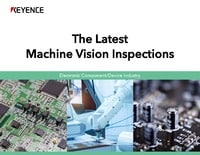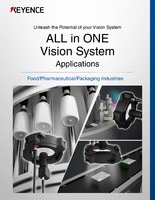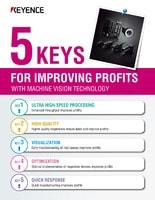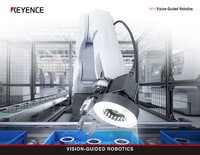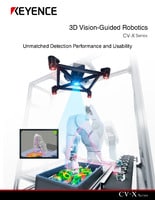History of Machine Vision : Lighting
LED lights are indispensable for image processing. Until the development of LED lights, various forms and different technologies were adopted for lighting.
Understanding the principles and characteristics of light emission will help you to achieve more stable inspection. This page introduces the history of lighting from its birth to current styles.
History of Light (Illumination)
From dazzling sunlight to dreamy moonlight, people in ancient times utilized this natural light as their only illumination method to sustain life. As time went on, artificial lighting techniques became available to transform the dark night into additional living hours which included open fires, torches, fanals, and candle light.
Then, a number of different lights appeared one after another. Oil lamps conveniently provided people with the bright light that replaced the primal light source of fire and torches. Gas lights and electric lamps followed next, which were put to practical use during the Industrial Revolution. Due to these technologies, there was a battle for market dominance between gas and electric.
From Arc Lights to Incandescent Lamps
People were overwhelmed by carbon arc lamps, which were an early type of electric lamp that provided light “as bright as daylight”. Then, Thomas Edison invented incandescent lamps (carbon bulbs, which emit yellow light), followed by smaller and brighter tungsten bulbs (which emit white light). Next, Edison adopted Japanese bamboo as the filament for carbon bulbs while metal filaments with high melting points were used for tungsten bulbs.
Following the tungsten bulbs were improvements by two Japanese individuals: Junichi Miura and Kitsuzi Fuwa. Miura invented a coil structure that arranges filaments in a spiral configuration. Fuwa succeeded in frosting glass bulbs to diffuse and soften light (inside frosting). The resulting high illumination efficiency and quality accelerated the increased demand for electric lamps.

The first practical bulb,with a carbon filament made from a burnt(carbonized)material such as bamboo and cotton thread.

A metal called"tungsten"is used as a filament,generating considerably higher tempreatures,and resulting in enhanced brightness.

Double-coiled filaments increased brightness and extended the life cycle of the bulb.

The internal surface of the glass bulb is frosted to soften dazzling light
Era of Luminescence (Fluorescence)
The dominance of incandescent lamps in the lighting market was replaced by fluorescent lamps. After its development in 1938, by an American engineer named George E. Inman, fluorescent lamp recognition increased. In those days, fluorescent lamps worked by converting the ultraviolet light (invisible light) generated from electrical discharge between two electrodes in mercury vapor into visible light through fluorescent materials coated on the internal surfaces of the glass tubes. Following this, elements used in the process were changed from mercury to metals with a high luminous efficiency, but the basic principle of light emission has not changed. “Energy-saving, white and bright” fluorescent lamps spread rapidly in the 1960s. This was due to small energy loss due to heat generation and the fact that they produce three to five times the output as incandescent lamps with the same input.
While oil lamps, gas lights, and incandescent lamps emit light using heat generation (radiation heat), fluorescent lamps use luminescence generated by electrical discharge. This is how the era of luminescence began.
The Shift from “Quantity” to “Quality”
After fluorescent lamps satisfied the need for “quantity” in the lighting market, the focus shifted to “quality”. In addition to straight and circular shaped lamps, other types were developed such as the three-wavelength light emitting type.
This type of light enabled both high luminous efficiency and high color rendering properties while maintaining a compact bulb type with low power consumption.
The pursuit for high quality lighting has also been observed in other (non-fluorescent) fields. HID (high intensity discharge) lamps can emit light dozens of times brighter than fluorescent lamps and are commonly used for outdoor lighting, including streets, roads, buildings, and ballparks. Also, in the field of incandescent lamps, high-efficiency, long-lasting halogen and krypton bulbs have been developed. Incandescent lamps are said to be an artificial light that most resembles sunlight. Their warm color is effective in stimulating appetite and creating a relaxing atmosphere.




Emergence of LEDs
LEDs (Light Emitting Diodes) are the next generation lighting system that have a better energy saving effect than incandescent and fluorescent lamps. LEDs consist of two types of semiconductors, P (positive) and N (negative), and are designed to emit light when current passes through them. Red and green LEDs have been used since the 1960s and high intensity blue LEDs appeared in 1993. The development of the white LED followed in 1996, which created a large variety of applications.
LEDs are largely classified into shell and chip types. The shell type emits light straight (bright when viewed straight from the front) while the chip type diffuses light horizontally. The former is commonly used for traffic lights and the latter for backlighting of cellular phone LCDs. In addition to these types, there is also the flat type with well-balanced directness and diffuseness. LEDs have various advantages, including low power consumption, long life cycle (about 40,000 hours), low CO2 emission, and light emitting elements as small as rice grains. These advantages make LEDs also suitable for reducing the size and weight of items. Furthermore, LEDs are environmentally friendly due to their low ultraviolet and infrared light emission. LEDs are employed for lighting inside H-2 transfer vehicles (spaceships for delivering supplies to the space station) because of their high impact resistance and durability.
Future Form of Lighting: LED, Electro Luminescence & Natural Light
The future of lighting will not only be developed using LEDs, but also Organic EL (Electro Luminescence). EL is a sheet type light source that offers surface lighting, unlike LEDs which are a point light source.
Due to its light-weight and bendable properties, its applications have been extended to areas such as electronic paper and displays. In the future, light emitting walls and ceilings are also expected to be developed.
Advancements have also been seen in sun lighting systems that effectively utilize natural light, the origin of lighting. Natural lighting is viewed as the ultimate clean energy to create a comfortable illuminated space. Increasing attention has also been drawn to the synergy between state-of-the-art “photonics technologies” such as LEDs, organic EL, and laser beams.
![A Technical History of Image Processing Vol.1 [Camera]](/img/asset/AS_46814_L.jpg)

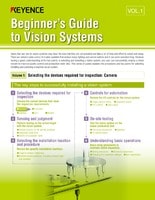

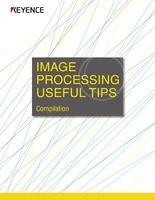
![The Latest Image Processing Applications [Transportation Industry]](/img/asset/AS_71759_L.jpg)
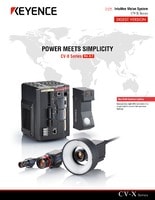
![The Latest Machine Vision Inspections [Food and Medical Industries]](/img/asset/AS_72814_L.jpg)
